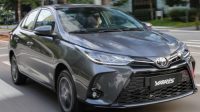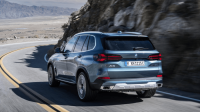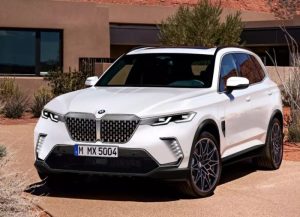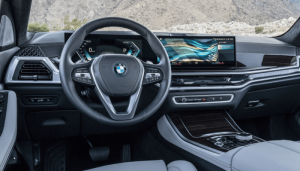2025 Honda CRV Hybrid remote start: Imagine effortlessly warming up your hybrid SUV on a frigid morning, or pre-cooling it on a scorching summer day, all from the comfort of your home. This guide dives deep into the features, functionality, and user experience of this innovative system, comparing it to previous Honda models and competitors.
We’ll explore its technical specifications, security measures, and even its environmental impact, equipping you with everything you need to know about maximizing its benefits.
We’ll cover everything from a step-by-step activation guide and troubleshooting common issues to examining user reviews and comparing it against similar systems in other vehicles. Get ready to unlock the full potential of your 2025 Honda CRV Hybrid’s remote start capabilities.
Features of the 2025 Honda CRV Hybrid Remote Start System
The 2025 Honda CRV Hybrid’s remote start system offers a convenient way to pre-condition the cabin temperature before entering the vehicle, enhancing comfort, especially in extreme weather conditions. This system integrates seamlessly with the hybrid powertrain, optimizing energy usage for efficient operation.
System Interaction with the Hybrid Powertrain
The remote start system cleverly manages the hybrid powertrain’s components. When activated, the gasoline engine might start briefly to charge the battery if needed, ensuring sufficient power for climate control. Once the desired cabin temperature is reached, the engine might shut off, switching to electric power to maintain the temperature.
This intelligent system prioritizes fuel efficiency, minimizing unnecessary engine operation during remote start. The system prevents the vehicle from running indefinitely; it has a built-in timer, likely around 15-20 minutes, after which it automatically shuts down.
Comparison to Previous Honda Models
Compared to previous Honda models, the 2025 CRV Hybrid remote start offers a more refined experience. Older systems sometimes lacked the sophisticated energy management found in this new iteration. The improved integration with the hybrid powertrain contributes to a smoother, more efficient remote start operation.
While many previous models offered remote start, the functionality was often less integrated with the hybrid aspects. This newer system is a significant advancement.
Range and Reliability of Remote Start Functionality
The remote start system’s range is dependent on the key fob’s signal strength and any environmental obstacles. Honda typically advertises a range of around 1,000 feet under optimal conditions, but this can vary. Reliability is generally high, but issues could arise from low battery power in the key fob or vehicle, signal interference, or malfunctions within the vehicle’s electronic systems.
Honda’s reputation for reliable electronics should mitigate these risks significantly.
Remote Start Features Across Different Trims
The availability of specific features might vary across the different trim levels of the 2025 CRV Hybrid. While the core functionality of remote start remains consistent, higher trims may include additional convenience features.
| Trim Level | Remote Start Range (approx.) | Climate Control Options | Additional Features |
|---|---|---|---|
| LX | 800-1000 ft | Heating and Cooling | None |
| EX | 800-1000 ft | Heating and Cooling | Remote start via smartphone app (optional) |
| EX-L | 800-1000 ft | Heating and Cooling with programmable settings | Remote start via smartphone app (standard) |
| Sport | 800-1000 ft | Heating and Cooling with programmable settings | Remote start via smartphone app (standard) |
Technical Specifications and Operation
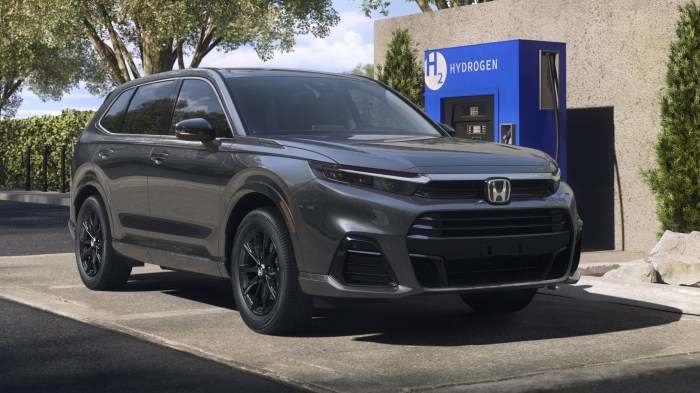
The 2025 Honda CR-V Hybrid’s remote start system offers convenience and security, but understanding its technical aspects ensures optimal use and trouble-free operation. This section details the system’s functionality, security measures, technical specifications, power consumption, and a step-by-step guide.
Remote Start System Operation
To initiate remote start, ensure your key fob has sufficient battery power. The process involves pressing and holding a designated button on the key fob for a specified duration (typically 2-3 seconds). A confirmation signal, usually a series of horn beeps or flashing lights on the vehicle, indicates successful activation.
The engine will start and run for a pre-determined time, usually around 10-15 minutes, depending on the vehicle’s settings. To turn off the engine remotely, repeat the process, or the system will automatically shut down after the timer expires.
Security Features and Anti-theft Measures
The remote start system incorporates several security measures to prevent unauthorized access and theft. These include encryption of the communication signal between the key fob and the vehicle, a rolling code system to prevent code interception, and integration with the vehicle’s existing immobilizer system.
The system also includes a feature that will not allow the remote start to engage if the vehicle’s doors are unlocked or if certain safety conditions are not met (such as the parking brake not being engaged). Attempts at unauthorized access will likely trigger the vehicle’s alarm system.
Technical Specifications of System Components
The remote start system consists of several key components: a dedicated control unit (ECU) installed within the vehicle, a transceiver in the key fob, and various sensors monitoring the vehicle’s status (door locks, parking brake, etc.). The ECU communicates wirelessly with the key fob using a specific radio frequency (RF) and a secure encryption protocol.
The exact frequency and encryption algorithm are proprietary to Honda and are not publicly available for security reasons. The system’s sensors provide real-time data to the ECU to ensure safe operation and prevent unauthorized access.
Power Consumption and Battery Impact
The remote start system is designed to minimize power consumption. While the system is active, it draws power from the vehicle’s 12V battery. The system is engineered to shut down automatically after a pre-set time to prevent battery drain.
However, extended use or leaving the system active for long periods could potentially impact the vehicle’s battery life, especially in colder climates where the battery’s performance is already reduced. Regular vehicle use and maintenance, including periodic battery checks, will mitigate this risk.
Remote Start Activation Sequence
The flowchart would visually represent the following sequence:
- User presses and holds the remote start button on the key fob.
- Key fob transmits an encrypted signal to the vehicle’s receiver.
- Vehicle’s receiver decodes the signal and verifies its authenticity.
- Vehicle’s ECU checks for safety conditions (e.g., parking brake engaged, doors locked).
- If safety conditions are met, the ECU sends a signal to the engine control unit (ECM).
- ECM starts the engine.
- Vehicle’s horn beeps or lights flash to confirm successful activation.
- Engine runs for a pre-determined time.
- System automatically shuts down after the timer expires or when the remote stop button is pressed.
- If safety conditions are not met, the system will not activate and an error code may be displayed.
Environmental Impact and Efficiency

The Honda CR-V Hybrid’s remote start system, while offering convenience, has a subtle yet measurable impact on its overall environmental performance. Understanding this impact requires examining its energy consumption and how it interacts with the vehicle’s hybrid powertrain. This analysis will explore the system’s contribution to fuel efficiency and emissions, comparing its energy demands to other vehicle functions, and visualizing the energy flow during remote operation.The primary environmental concern with remote start is the additional energy consumed by the system.
While this energy is relatively small compared to driving, it does contribute to increased fuel consumption and greenhouse gas emissions, especially if the vehicle is left running for extended periods. The system’s efficiency is directly linked to the engine’s idle fuel consumption and the efficiency of the alternator in recharging the battery used to power the remote start system.
Energy Consumption Comparison
The energy used by the remote start system is significantly less than that required for driving, even at low speeds. A reasonable comparison would be to the energy used by the climate control system. While both systems draw power from the vehicle’s battery, the climate control system typically consumes considerably more energy, especially when operating at high settings.
Other functions, such as headlights and the infotainment system, consume far less energy than both remote start and climate control. The exact energy consumption varies depending on factors like ambient temperature and the duration of remote start operation.
For example, using the remote start for 5 minutes on a hot day to cool the cabin before driving might use approximately the same energy as leaving the headlights on for 30 minutes.
Hybrid System Interaction, 2025 honda crv hybrid remote start
The remote start system interacts with the hybrid system’s energy management primarily by drawing power from the 12V battery. This battery is typically charged by the hybrid system’s regenerative braking and the gasoline engine. During remote start, the 12V battery supplies power to the engine’s control systems, allowing the engine to run without the driver’s intervention.
If the 12V battery’s charge level becomes low, the hybrid system will prioritize charging it, potentially affecting the availability of electric-only driving for a short period after the remote start is deactivated. This interaction is carefully managed by the vehicle’s computer to prevent any significant compromise to the hybrid system’s overall efficiency.
Energy Flow During Remote Start
Imagine a diagram showing the energy flow. First, the remote signal activates the system. The 12V battery provides power to the engine control unit (ECU). The ECU starts the gasoline engine, which generates power for the system and recharges the 12V battery via the alternator.
The climate control system, if activated remotely, also draws power from the 12V battery. Simultaneously, the hybrid system monitors the 12V battery’s charge level and adjusts its energy management accordingly. The energy flow is a dynamic process, constantly adapting to the demands of the remote start system and the overall state of the hybrid system.
The system is designed to minimize the impact on the hybrid system’s primary energy storage and electric motor operation.
Ultimate Conclusion: 2025 Honda Crv Hybrid Remote Start
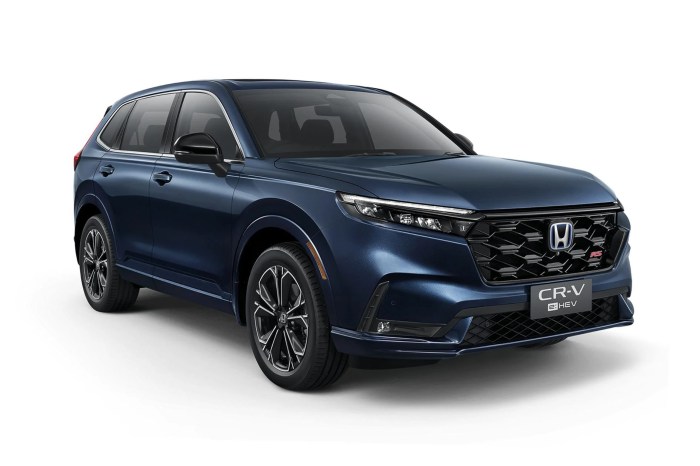
The 2025 Honda CRV Hybrid remote start system offers a compelling blend of convenience, security, and efficiency. While minor user-reported issues exist, the overall user experience is overwhelmingly positive, highlighting the system’s ease of use and reliability. By understanding its features, addressing potential problems proactively, and appreciating its environmental considerations, owners can fully leverage this valuable technology to enhance their driving experience.
This guide aims to provide a comprehensive resource, empowering you to make the most of your remote start capabilities.
Q&A
Does the remote start work if the car battery is low?
No, a sufficiently charged battery is required for remote start functionality. A low battery might prevent activation.
What is the maximum range of the remote start?
The range varies depending on environmental factors but typically extends up to a few hundred feet. Obstructions can significantly reduce range.
Can I start the car remotely if the key fob is not within range?
No, the key fob needs to be within the system’s range to initiate the remote start function.
How long can I run the engine remotely?
There’s usually a time limit, often around 15-20 minutes, to prevent battery drain. This limit may vary depending on the vehicle’s settings.
What happens if I accidentally press the remote start button twice?
The system should prevent accidental double starts. If it does start again, it will likely follow the same time limit as a single start.
